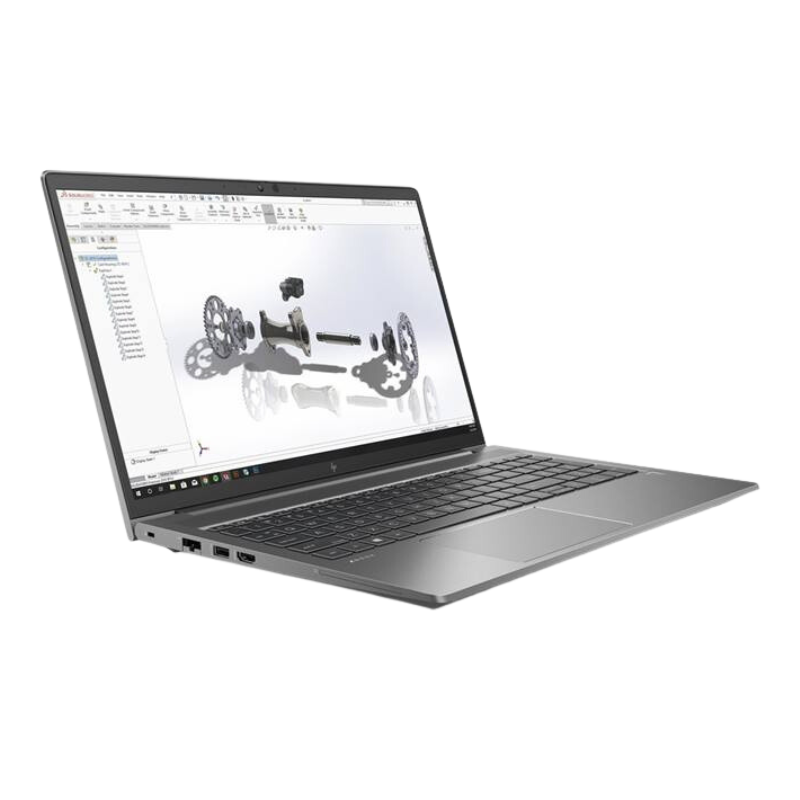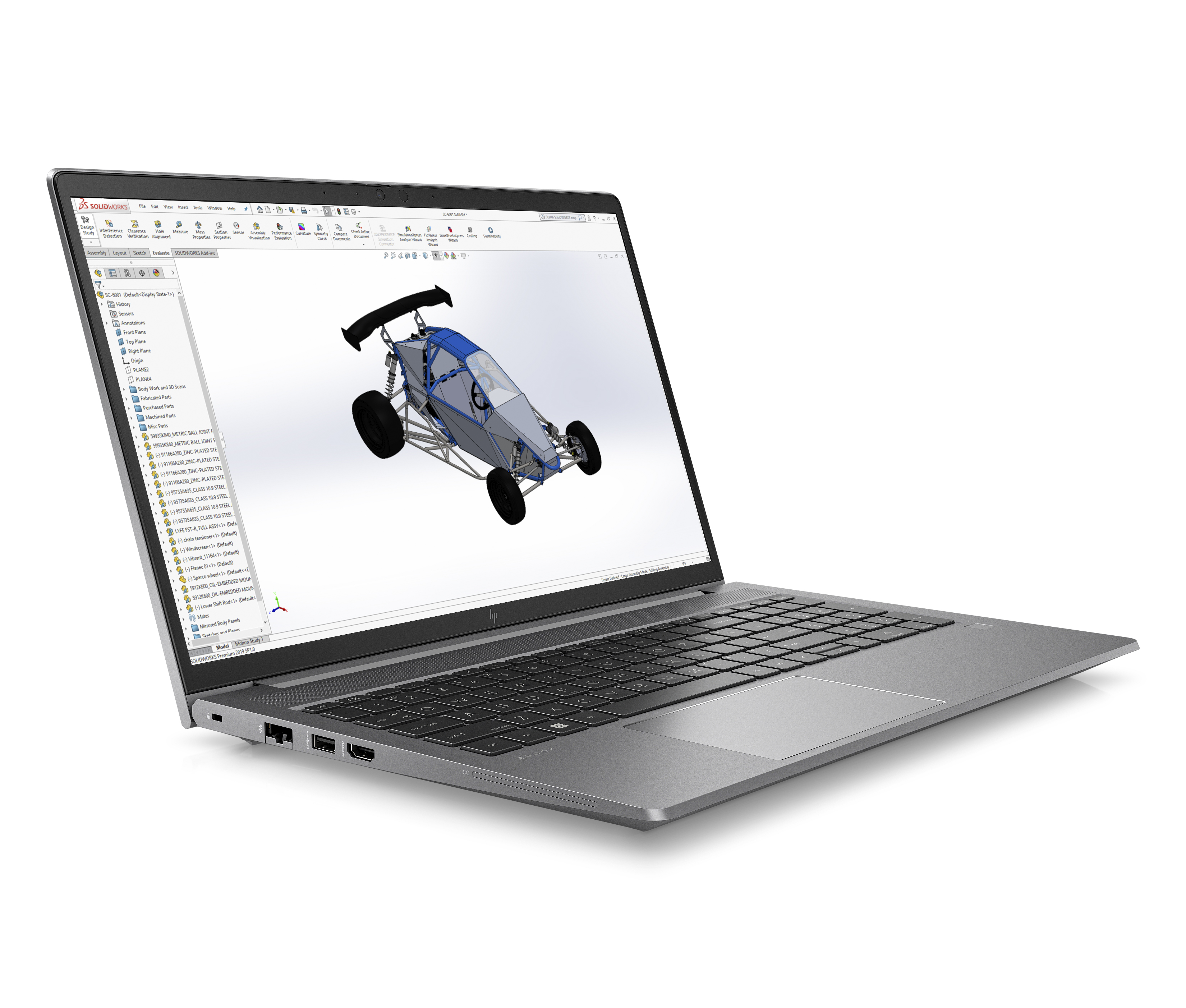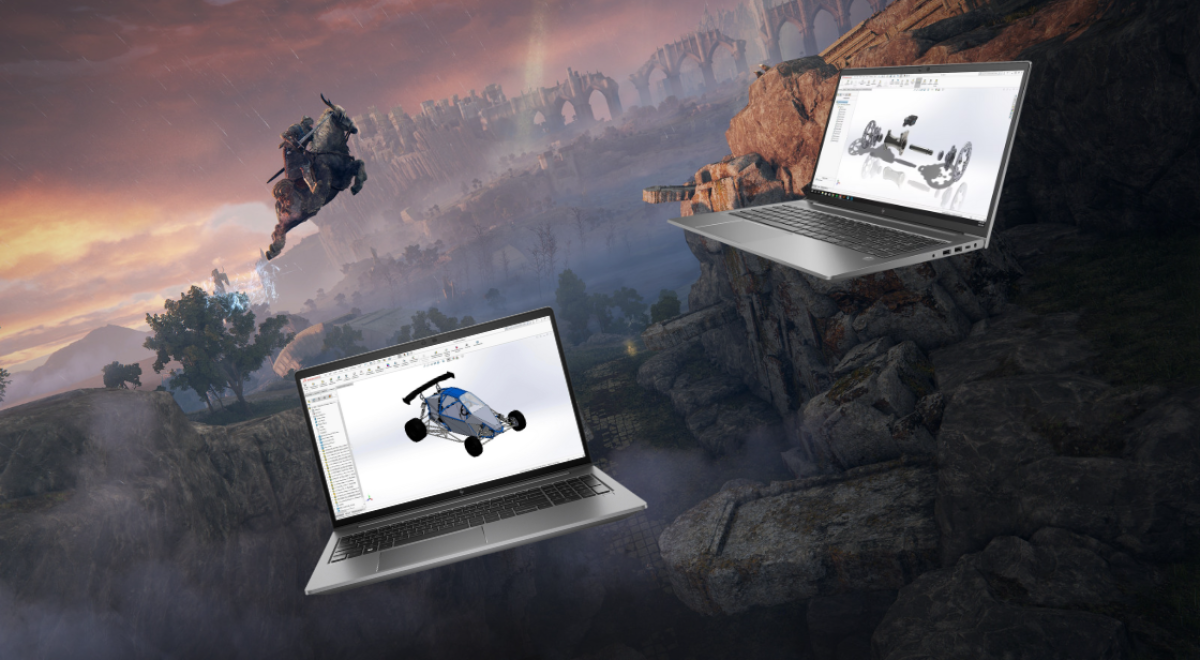Real-world test: Is a workstation suitable for gaming?
Have you bought a workstation for your studies or are you thinking about buying one but would also like to use it for gaming in your free time? Now you're asking yourself whether (your) workstation is suitable for gaming or whether you should rather get a gaming laptop? Our practical test will answer these questions for you! In this article, we'll show you the difference between a workstation and a gaming laptop, and how our two latest workstations from HP perform in different games.
What is the Difference between a Workstation and a Gaming Laptop?
When buying a laptop for graphics-intensive tasks, you have the choice between a device with a professional graphics card and a device with a consumer graphics card. Although both laptop variants have dedicated graphics processing units (GPUs), they are designed for different types of users and workloads.
A workstation with a dedicated, professional GPU is intended for users who regularly need to run graphics-intensive applications. These laptops are usually equipped with high-end components like a powerful CPU, lots of RAM and a professional graphics processor, such as a NVIDIA Quadro or an AMD Radeon Pro. Professional GPUs are optimised for accuracy and precision rather than pure performance. They are designed to perform complex calculations from rendering high-resolution graphics to running simulations with minimal errors or glitches. In addition, workstations often have special features such as ISV certifications that ensure hardware and software work seamlessly together.
A gaming laptop with a dedicated consumer GPU, on the other hand, is designed for users who want to play the latest games on the go. These laptops often also have high-end components such as a powerful CPU, plenty of RAM and a dedicated gaming GPU, such as an NVIDIA GeForce or AMD Radeon. Gaming GPUs are optimised for performance, not accuracy or precision. They are designed to handle high frame rates and provide a smooth, responsive gaming experience, even at high resolutions. In addition, gaming laptops often have features like RGB lighting, support high refresh rate screens and advanced cooling systems.
So, if your studies require you to run graphics-intensive applications with high accuracy and precision, a workstation with a professional GPU certified for those applications is the right choice, or your first choice. This is the case, for example, in degree programmes such as architecture or mechanical engineering. However, if you are a gaming enthusiast, want to play the latest games with the highest possible performance and don't need the device for study purposes (or your subject doesn't have any special hardware requirements), a gaming notebook is certainly the better or correct choice.
The assumption is, therefore, that workstations with professional GPUs perform poorly in gaming compared to laptops with consumer GPUs. Many modern workstations are equipped with powerful GPUs, but they should actually deliver solid gaming performance. We tested whether you can game reasonably with the workstation you need for your studies with a workstation from our Neptun Fall Wave 2022 and a workstation from the Neptun Spring Wave 2023.
Hardware Specifications of the Test Devices
For our practical test, we compared the HP ZBook Power G8 with the newer HP ZBook Power G9. The Power G8 is equipped with an Nvidia Quadro T1200 graphics card. The Power G9, on the other hand, comes with the more up-to-date and more powerful Nvidia RTX A2000 GPU. However, this is also reflected in the higher price of the device.
We have listed the exact technical specifications of both devices in the following table:
 |
 |
|
| Specs | HP ZBook Power G8 | HP ZBook Power G9 |
| CPU |
Intel Core 11th Gen |
Intel Core 12th Gen i7-12700H (14-core) |
| GPU |
Nvidia Quadro T1200 + |
Nvidia RTX A2000 + Intel UHD Graphics |
| RAM | 16 GB | 16 GB |
| SSD | 1 TB SSD NVME | 1 TB SSD NVME |
The Values Explained (FPS Avg, Max, Min, 1% Low, 0.1% Low)
When benchmarking graphics performance, there are several metrics that are commonly used to evaluate the performance of a graphics processor. These metrics include FPS ("Frames per Second") Average, FPS Maximum, FPS Minimum, FPS 1% Low and FPS 0.1% Low.
- FPS Average (Avg): This metric represents the average number of frames per second rendered by the GPU during the benchmark run. It is a good indicator of the overall performance of the GPU.
FPS Maximum (Max): This value represents the maximum number of frames per second that the GPU was able to render during the benchmark run. It is an indication of the maximum performance potential of the graphics processor.
FPS Minimum (Min): This metric indicates the lowest number of frames per second that the GPU was able to render during the benchmark run. It is an indicator of the worst (on average) performance of the GPU.
FPS 1% Low: This metric indicates the minimum number of frames per second that the GPU could render during the "worst" 1% of the benchmark run. This is an indication of possible judder that may occur during gaming.
FPS 0.1% Low: This metric represents the minimum number of frames per second that the GPU was able to render during the "worst" 0.1% of the benchmark run. This is an indication of the minimum performance that the GPU can deliver during the most demanding moments of the benchmark.
The various metrics are important because they provide a more detailed picture of a GPU's performance than just going by the average FPS value . Looking at the FPS maximum, FPS minimum, FPS 1% low and FPS 0.1% low provides a better understanding of the GPU's performance potential and its performance in actual gaming scenarios.
Gaming-Test: Unigine Heaven, GTA V, RE3 & Elden Ring
We tested three popular games with the HP ZBook Power G8 and HP ZBook Power G9: GTA V, Resident Evil 3 and Elden Ring. In addition, we tested both workstations with Unigine's Heaven Benchmark. We looked at the frame rate (FPS), graphics settings and stability to see how the two devices compare.
Unigine Heaven
The "Heaven" benchmark is a popular graphics benchmark tool developed by Unigine to test the performance and stability of GPUs under heavy graphics loads. We also used it to assess the performance of the two workstations. To do this, we used the "Extreme Preset" in the standard resolution of 1600x900 pixels.
The Nvidia Quadro T1200 installed in the HP ZBook Power G8 achieved an average frame rate (FPS Avg) of 53 frames per second. The RTX A2000 of the Power G9 was around 49% faster here with 79 FPS. The RTX A2000 was also ahead in the test in terms of the maximum FPS achieved and was around 43% faster. However, the low values were surprising. The Quadro T1200 achieved higher values for the minimum FPS, the 1% low and the 0.1% low and was up to 63% better than the more powerful RTX graphics card.
We suspect that these performance differences are due to the graphics drivers, but could not verify this.
Resident Evil 3
In the horror action game Resident Evil 3, the same approximately 3-minute game section was tested with the "Balanced" preset in 1080p resolution.
The Quadro T1200 achieved a consistently solid gaming performance here. Thus, an average frame rate of 60 FPS was achieved, which is ideal for most users. Thanks to V-Sync, the maximum frame rates were adapted to the monitor so that they never exceeded 60 FPS. The gaming experience was very smooth and stable, which is reflected in the min and low values. Even in 0.1% of the cases, the game did not drop below 51 FPS.
Large differences in performance were evident in this game. For example, the RTX A2000 stayed above 134 FPS on average and none of the min values dropped below 70 FPS. The game thus runs absolutely smoothly in 1080p. We also tested the RTX A2000 with the same settings in 4K resolution. Here, however, the game could only be rendered with 45 FPS on average. So it wasn't quite enough for the absolutely smooth 60 FPS experience in 4K.
GTA V
For Grand Theft Auto (GTA) V, the integrated benchmark was used with the recommended settings. Since this is an older, less demanding title, we decided to test here directly with a resolution of 4K (2160p).
Unfortunately, the Quadro T1200 in the Power G8 could only achieve a smooth 60 FPS in the maximum setting. But those who can be content with 30 FPS will have a good experience with this GPU. It's a shame that the card sometimes drops below 30 FPS, but basically no judder was noticeable.
The RTX A2000 in the Power G9 does a little better, but cannot offer the hoped-for 60 FPS on average. At least the GPU never dropped below 30 FPS even in 0.1% low, which makes the graphics card recommendable for smooth 4K gaming as long as you don't expect 60 FPS.
Elden Ring
In the role-playing game hit Elden Ring, the same section of about 3 minutes was tested with the "High" preset and a resolution of 1080p.
The Quadro T1200 achieved an average of 40 FPS. Surprisingly, it was better at 1% Low and 0.1% Low than the RTX card. This could be related to the fact that no exactly identical benchmark can be reproduced between the two cards. Differences in the driver software could also be the cause.
The RTX A2000 achieved an average of 48 FPS and was thus around 20% better. However, gameplay felt less fluid overall than with the "worse" Quadro, which is somewhat disappointing.
Both GPUs unfortunately failed to deliver 60 FPS in 1080p, which is a shame. If you want to achieve this in Elden Ring with both devices, you have to reduce the graphics settings significantly or reach for a laptop with more graphics power.
Conclusion: Using a Workstation as Gaming Laptop?
So can you also play with a workstation? The answer is: Yes, definitely! The tested games ran stably at all times on both devices and, apart from occasional judder in Elden Ring, smoothly, with either 60 or 30 FPS. The assumption that you can't play games on a workstation GPU was disproved in our practical test. Although you tend to get more performance for your money with dedicated gaming laptops, those who have to buy a workstation for their studies don't have to say goodbye to gaming completely. Many games will also work well on workstations with professional graphics cards. However, you might not get the same performance and optimised gaming experience as with a dedicated gaming graphics card.
By the way, if you need a workstation for the upcoming autumn semester, you can find the two HP workstations tested in the current warehouse sale.
Jobs available!
We are looking for a working student as Deputy Support Coordinator (50-60%). You can find more details about the position here. Apply now or share the job description with your friends!
Order Information
You can track the order status of your laptop in our distribution partner's customer account. You can find information on this in the FAQ.
Help Point : Please book an appointment
Our support staff at the Help Points ETHZ, Bern vonRoll, UNIBAS and UNILU are there for you. If you need technical support, contact us via email to make an appointment.
Jobs available!
We are looking for a working student as Deputy Support Coordinator (50-60%). You can find more details about the position here. Apply now or share the job description with your friends!
Order Information
You can track the order status of your laptop in our distribution partner's customer account. You can find information on this in the FAQ.
Help Point : Please book an appointment
Our support staff at the Help Points ETHZ, Bern vonRoll, UNIBAS and UNILU are there for you. If you need technical support, contact us via email to make an appointment.
